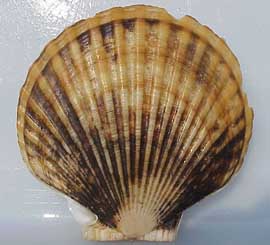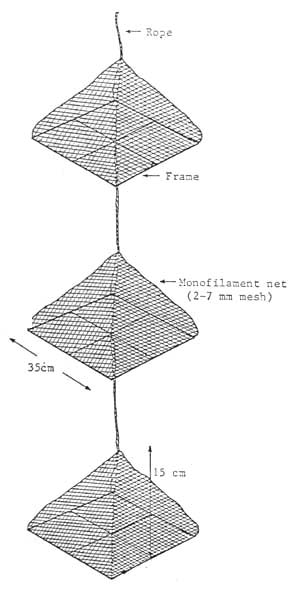Scallop aquaculture
Scallop aquaculture refers to the process of cultivating and harvesting scallops in a controlled environment, as opposed to capturing them in the wild. This form of aquaculture is a significant part of the seafood industry, providing a sustainable source of scallops for consumption. Scallop farming has been developed due to the increasing demand for scallops and concerns over the sustainability of wild scallop populations.
History[edit | edit source]
The history of scallop aquaculture dates back to the early 20th century, with Japan being one of the pioneers in the field. The practice has since spread to various parts of the world, including North America, Europe, and China, each region adapting different techniques suitable for their local conditions.
Species[edit | edit source]
Several species of scallops are cultivated, including the Pacific scallop (Patinopecten yessoensis), the Atlantic sea scallop (Placopecten magellanicus), and the King scallop (Pecten maximus). The choice of species depends on the environmental conditions and market demands.
Cultivation Methods[edit | edit source]
Scallop aquaculture can be carried out using various methods, including:
- Bottom Culture: Scallops are grown directly on the seabed. This method is similar to how wild scallops live but allows for easier monitoring and management.
- Suspended Culture: Scallops are grown in nets, cages, or lanterns suspended in the water column. This method promotes faster growth rates and reduces the risk of predation and disease.
- Ear Hanging: A technique where scallops are suspended by drilling a small hole near the hinge of the shell and attaching them to a line. This method maximizes space and allows for individual growth monitoring.
Environmental Impact[edit | edit source]
Scallop aquaculture has a relatively low environmental impact compared to other forms of aquaculture. Scallops filter feed on plankton, which means they do not require feed inputs, reducing the risk of pollution from uneaten feed. However, the structures used for suspended cultures can alter local ecosystems, and there is a risk of genetic pollution if farmed scallops interbreed with wild populations.
Economic Importance[edit | edit source]
The cultivation of scallops provides economic benefits to coastal communities, offering employment opportunities and a source of income. Scallop aquaculture also contributes to the seafood industry by providing a consistent and sustainable supply of scallops.
Challenges[edit | edit source]
Despite its benefits, scallop aquaculture faces several challenges, including vulnerability to diseases, the impact of climate change on water temperatures and ocean acidity, and the need for improvements in hatchery technologies to ensure a stable supply of seed scallops.
Future Directions[edit | edit source]
Research in scallop aquaculture is focused on improving hatchery techniques, developing more sustainable and efficient cultivation methods, and understanding the impacts of climate change on scallop populations. Advances in genetics and breeding programs are also promising for enhancing disease resistance and growth rates.
- Need help finding a doctor or specialist anywhere in the world? WikiMD's DocFinder can help with millions of doctors!
| This article is a stub. Help WikiMD grow by registering to expand it. |
Navigation: Wellness - Encyclopedia - Health topics - Disease Index - Drugs - World Directory - Gray's Anatomy - Keto diet - Recipes
Search WikiMD
Ad.Tired of being Overweight? Try W8MD's physician weight loss program.
Semaglutide (Ozempic / Wegovy and Tirzepatide (Mounjaro) available.
Advertise on WikiMD
WikiMD is not a substitute for professional medical advice. See full disclaimer.
Credits:Most images are courtesy of Wikimedia commons, and templates Wikipedia, licensed under CC BY SA or similar.
Contributors: Prab R. Tumpati, MD





